Fragrant Tea Olive Plant
- March 13, 2024
- 0 comment
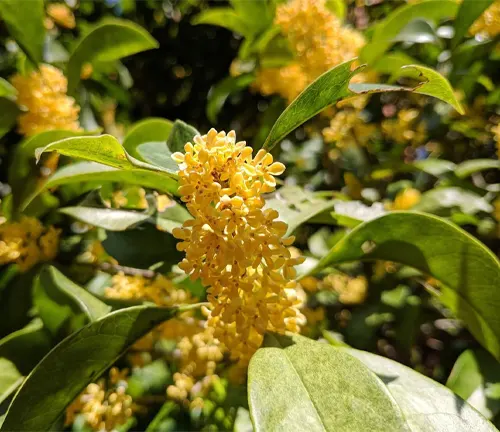
The fragrant tea olive plant, also called Osmanthus Fragrans, is a lovely evergreen shrub loved for its beauty and sweet scent. People adore this plant for its charming looks and delightful fragrance. It’s a favorite choice for gardens and landscapes because of its visual appeal and pleasant aroma.
This plant is not just pretty; it also holds cultural and ecological importance. In many cultures, the fragrant tea olive is highly valued for its symbolism and traditional uses. Additionally, it plays a role in the ecosystem by providing habitat and food for various wildlife. Overall, the fragrant tea olive plant is a wonderful addition to any garden, bringing beauty, fragrance, and a touch of cultural significance.
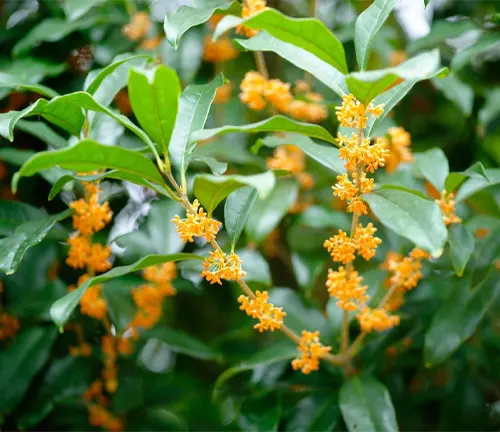
| Characteristics | Description |
| Scientific Name | Osmanthus fragrans |
| Common Names | Fragrant tea olive, sweet olive, sweet osmanthus |
| Family | Oleaceae |
| Native Region | Asia, particularly China and Japan |
| Plant Type | Evergreen shrub |
| Size | Can grow up to 10-15 feet tall and 8-10 feet wide |
| Leaves | Dark green, glossy, and leathery |
| Flowers | Small, creamy white, and exude a powerful, sweet fragrance |
| Propagation | Typically propagated through cuttings |
| Drought Tolerance | Moderately drought-tolerant once established |
| Cultural Uses | Often used in traditional Chinese and Japanese gardens for its symbolic significance |
| Ecological Role | Provides nectar for pollinators and serves as a habitat for small birds |
| Notable Species | Some popular species include Osmanthus fragrans var. aurantiacus (Orange Tea Olive) and Osmanthus fragrans var. thunbergii |
| Hardiness Zones | Generally suited for USDA hardiness zones 7-10 |
| Growth Rate | Slow to moderate |
| Lifespan | Can live for many decades with proper care |
Botanical Beauty of “Fragrant Tea Olive Plant”
The fragrant tea olive plant is famous for its stunning botanical beauty, which includes its lovely flowers, glossy leaves, and overall graceful appearance. This plant stands out for its visual appeal, making it a popular choice for gardens and landscapes.
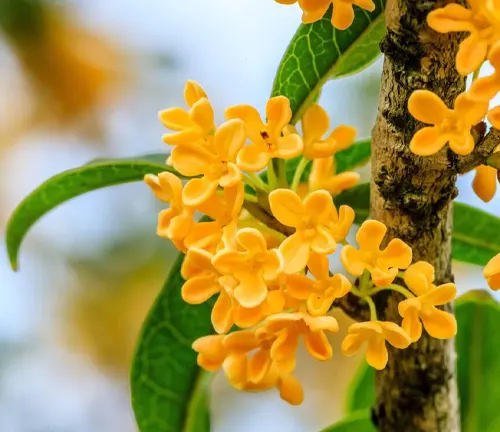
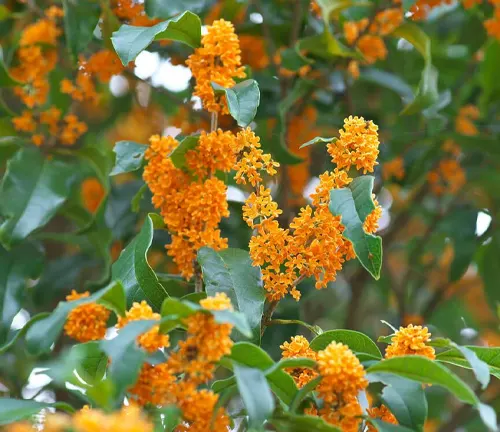
Woodland Elegance
The woodland elegance of the fragrant tea olive plant comes from its lush, dense foliage and delicate, small flowers. These features give it a graceful and charming appearance that adds a touch of natural beauty to gardens and landscapes. Its presence brings a sense of tranquility and sophistication, making it a highly desired plant for those looking to enhance the beauty of their outdoor spaces.
Ecological Importance
The fragrant tea olive plant is crucial for the environment because it helps attract pollinators like bees and butterflies with its sweet-smelling flowers. By doing so, it aids in the pollination process, which is essential for the reproduction of many plants. This plant’s role in supporting local biodiversity by providing a food source and habitat for various insects and animals highlights its ecological importance in maintaining a healthy ecosystem.
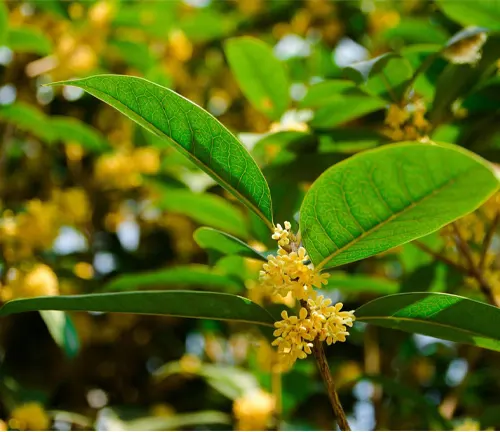
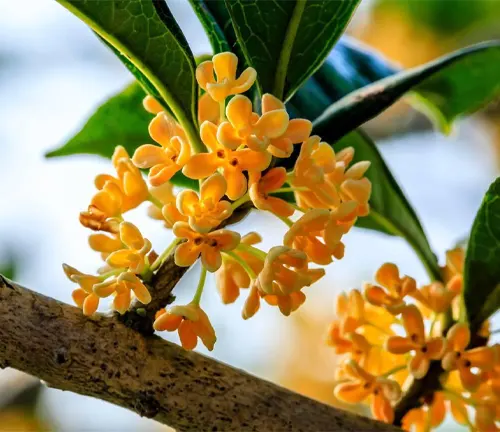
Cultivation and Conservation
The fragrant tea olive plant is highly valued for its beauty, leading to conservation efforts aimed at preserving various species of this plant. By safeguarding different types of fragrant tea olive plants, we ensure that they remain a part of both natural environments and cultivated landscapes. These conservation initiatives help protect the diversity and beauty of these plants for future generations to enjoy, highlighting the importance of preserving these botanical treasures for their ornamental value and ecological significance.
Fragrance
The fragrance of the fragrant tea olive plant is its most remarkable characteristic, filling the air with a captivating scent that is especially potent during the fall when its flowers bloom. This delightful aroma is often described as sweet, floral, and slightly fruity, creating a pleasant and inviting atmosphere wherever the plant is present.
The fragrance of the tea olive plant is not only enjoyable for humans but also serves a functional purpose by attracting pollinators like bees and butterflies, aiding in the plant’s reproduction and contributing to the overall ecosystem. The enchanting scent of the fragrant tea olive plant has made it a popular choice for gardens, parks, and other outdoor spaces where people gather to relax and enjoy nature. Its ability to perfume the air with its sweet fragrance adds a sensory dimension to any landscape, enhancing the overall experience for visitors.
Additionally, the fragrance of the tea olive plant has been used in perfumery and aromatherapy for its calming and uplifting properties, further showcasing its versatility beyond just being a visually appealing plant.
Soil Stabilization
The fragrant tea olive plant boasts a strong and extensive root system that plays a crucial role in soil stabilization, making it a valuable asset for landscaping in diverse terrains. These roots help anchor the plant firmly in the ground, preventing soil erosion and promoting soil health by improving its structure and nutrient retention.
By stabilizing the soil, the fragrant tea olive plant helps prevent landslides, runoff, and other forms of soil degradation, making it an excellent choice for areas prone to erosion or instability. In addition to its aesthetic appeal and delightful fragrance, the fragrant tea olive plant’s ability to stabilize soil adds to its overall value in landscaping and environmental conservation efforts.
Whether planted on slopes, near water bodies, or in urban settings, this plant’s root system contributes to maintaining the integrity of the land and promoting a healthy ecosystem. Landscapers and conservationists often choose the fragrant tea olive plant not only for its beauty but also for its practical function in stabilizing soil and preserving the natural landscape for future generations to enjoy.
Common Uses
Beyond its role as a beloved garden plant, the fragrant tea olive offers more than just visual appeal. Its flowers are utilized in various traditional practices, such as brewing fragrant teas and creating perfumes to capture their delightful scent. In tea-making, the flowers add a unique and aromatic essence, infusing the beverage with a subtle floral note that enhances the overall drinking experience.
This use of fragrant tea olive flowers in teas has been a longstanding tradition in many cultures, where the plant’s essence is valued for its soothing and aromatic qualities. Moreover, the flowers of the fragrant tea olive plant are prized for their aromatic properties in perfumery. The sweet, floral scent of these blooms is captured and incorporated into perfumes and scented products, adding a touch of natural elegance and charm.
The essence extracted from the flowers is often used as a top or middle note in perfumes, contributing to a fragrance that is both alluring and refreshing. This utilization of fragrant tea olive flowers in perfumery highlights the plant’s versatility and its ability to enhance sensory experiences beyond just visual and olfactory delight.
Benefits
The fragrant tea olive plant offers more than just a pleasant scent; its fragrance is linked to stress relief and relaxation, making it a popular option for aromatherapy and perfumery. The calming and soothing aroma of the plant’s flowers has been known to help reduce stress and anxiety and promote a sense of relaxation.
In aromatherapy, the essential oils extracted from the fragrant tea olive are often used in diffusers, massage oils, or bath products to create a tranquil atmosphere and aid in relaxation. Furthermore, the fragrance of the fragrant tea olive plant is valued in perfumery for its ability to evoke feelings of comfort and well-being. The sweet and floral notes of the plant’s essence add a touch of elegance and serenity to perfumes, creating a sensory experience that is both uplifting and calming.
By incorporating the fragrance of the fragrant tea olive into perfumes, scent designers can create blends that not only smell delightful but also have potential mood-enhancing effects on those who wear them. This dual benefit of sensory pleasure and emotional well-being underscores the plant’s significance in both aromatherapy and perfumery practices.
Different Species
Osmanthus Fragrans var. Aurantiacus ‘Orange Tea Olive‘
This one stands out because it has orange to dark orange flowers. It smells amazing just like the usual white ones but adds beautiful colors to your garden in fall and sometimes spring too.


Osmanthus Fragrans var. Thunbergii ‘Thunberg’s Tea Olive‘
This type is known for its very strong smell. It has white flowers and can surprise you with blooms any time of the year, but mostly in spring and fall. It’s great for filling your garden with a lovely scent.
Osmanthus Fragrans ‘Fudingzhu’
‘Nanjing Beauty‘
Famous for having lots of flowers, this plant is covered in white blooms which look stunning against the dark leaves. It flowers for a long time and is one of the showiest types you can find.
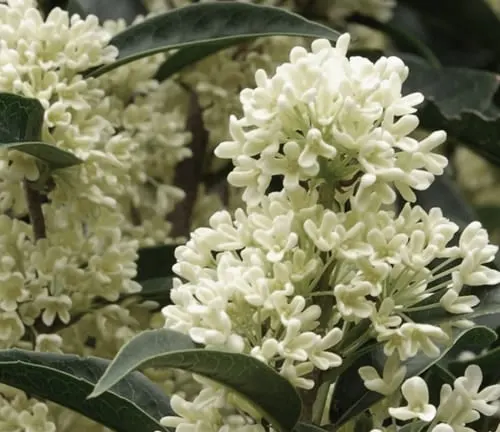

Osmanthus Fragrans
‘Sweet Olive’
The classic kind with creamy white flowers that have a sweet and strong smell. It usually blooms in fall and grows slowly but surely.
Osmanthus Fragrans
‘Apricot Gold’
This plant is special because of its apricot-colored flowers, adding a rare color and sweet fragrance to your garden, just like other Tea Olives.
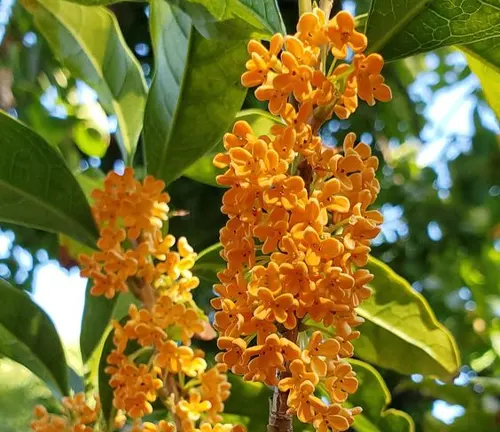
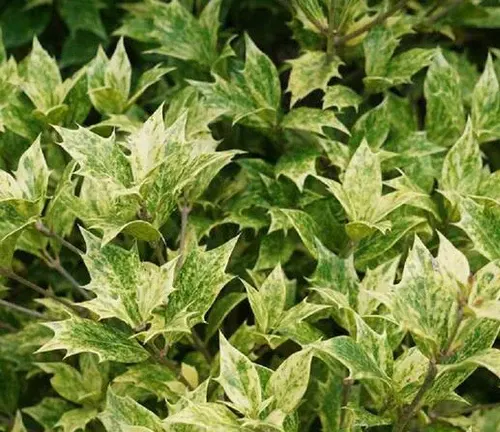
Osmanthus Fragrans
‘Goshiki’
Meaning “five colors” in Japanese, this plant has leaves with a mix of cream, yellow, and green spots. The flowers might not be the main show, but the colorful leaves make it interesting all year round.
Frequently Asked Questions (FAQs)
1. What Makes Fragrant Tea Olive Plants Special?
Fragrant Tea Olive Plants are loved for their beautiful look and sweet smell. They’re great for adding both charm and a lovely scent to gardens.
2. Can Fragrant Tea Olive Plants Grow Big?
Yes, they can grow up to 10-15 feet tall and 8-10 feet wide, making them a substantial and attractive addition to any outdoor space.
3. What Do Fragrant Tea Olive Flowers Smell Like?
The flowers give off a powerful, sweet fragrance that can remind you of a mix of fruits and flowers. It’s especially strong in fall when they bloom.
4. Are Fragrant Tea Olive Plants Easy to Grow?
Yes, they’re quite easy to take care of. They like sun or partial shade and don’t need much water once they’re settled and growing.
5. Can I Use Fragrant Tea Olive Plants in My Small Garden?
Absolutely! Even though they can get big, with regular pruning and care, you can keep them at a manageable size for smaller spaces.
6. Why Are Fragrant Tea Olive Plants Important for Wildlife?
They help the environment by attracting bees and butterflies, which pollinate other plants. Birds also enjoy their dense leaves for shelter.
7. How Long Do Fragrant Tea Olive Plants Live?
With proper care, they can live for many decades, making them a lasting feature in your garden.
8. Can Fragrant Tea Olive Plants Help with Soil Erosion?
Yes, their strong roots can help hold soil in place, making them good for areas that need stabilizing.
9. What’s the Best Way to Propagate Fragrant Tea Olive Plants?
They’re typically propagated through cuttings, which is a straightforward way to grow new plants from an existing one.
10. Are There Different Types of Fragrant Tea Olive Plants?
Yes, there are several types, including ones with orange or apricot-colored flowers, and others with variegated leaves. Each type brings its own unique beauty to the garden.




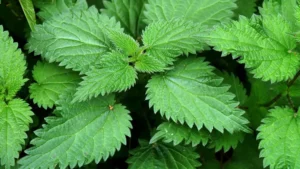
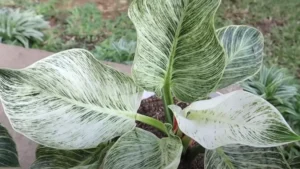
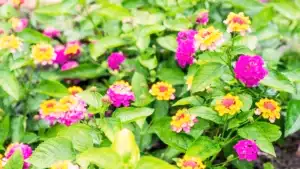


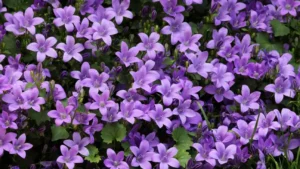
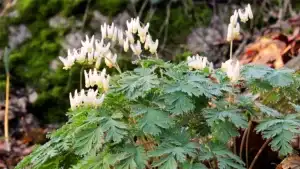
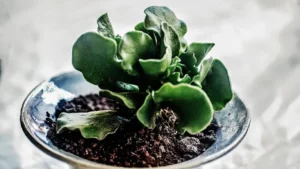
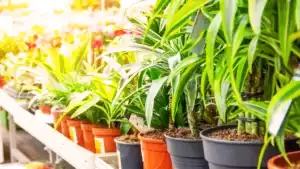
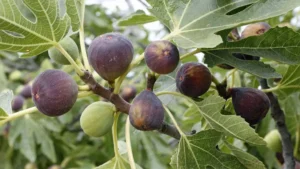
Leave your comment